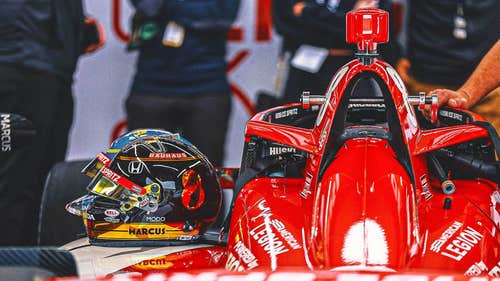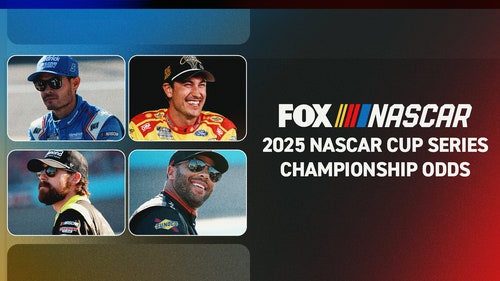
Could more Daytona changes be coming?
Racing purists who wanted continual tandem drafting to be abolished are about to get their wish.
During the three-day test at Daytona International Speedway last week, NASCAR officials and teams worked tirelessly to develop a package to discourage the tandem racing that became the norm at restrictor-plate tracks last year.
With the evolution of drafting, drivers discovered a two-car breakaway — hooking two cars together nose to tail — could cut seconds off their lap times and the pair could pull away from the field. The move helped Kevin Harvick win the 2010 Aaron’s 500 at Talladega Superspeedway as he pushed Jamie McMurray around the track in the closing laps but broke away on the final circuit and completed a slingshot pass to the finish line.
But then everyone started doing it. Suddenly, drivers needed a dancing partner and were at the mercy of that partner.
The strategy bit Dale Earnhardt Jr. twice at Talladega last year. The Earnhardt-Jimmie Johnson tandem waited too long to make its move in the October race and was mired in traffic at the finish. Earnhardt finished 25th. In the spring, he pushed teammate Johnson to the win and took one for the team. Johnson received the trophy; Earnhardt was handed the checkered flag as the consolation prize.
After the race, Earnhardt explained that the duo worked better with the No. 48 in front, but it didn’t soften the sting. That became clear through Earnhardt’s words after fall time trials at Talladega. NASCAR’s Most Popular Driver wished to control his own destiny on the racetrack and not rely on the assistance of others.
“I miss the days of dropping the green flag and just drive my car wherever I want to go and try to get to the lead and get the fans to their feet,” said Earnhardt, who commands a remarkable response when the No. 88 takes the point. “Nowadays, you have to find your teammate, your partner and do what is best for the both of you.
“So you don’t get to drive your car into the lead. You don’t get to get up there and work and battle the way that you want. So, it’s different. Over time, maybe one day we’ll get to race around here like we used to. I think that’s what the fans want. I look forward to that day. Hopefully, I’m still driving when it happens.”
If it’s up to NASCAR, Earnhardt will get his wish. The sanctioning body tested a variety of configurations that would allow drivers to tandem draft perhaps for a lap or two, with regular breaks to get air through the grille, but not the full-out, love-bug racing that dominated the restrictor-plate landscape last year.
NASCAR lobbied for multiple teams to test the new car packages in a big draft at the start of Friday and Saturday’s afternoon practice sessions. Vice president of competition Robin Pemberton salivated on Friday as he watched the pack develop.
"It looks pretty (freakin') cool to me . . . and you can keep the (freakin') in there," Pemberton said with a grin.
With the added horsepower (about 26) from the larger restrictor plate (15/16ths of an inch), drivers found the speed and freedom to move away from the tandem draft.
“With the smaller spoiler and restrictor plate, cars have a lot of power, a lot of speed, and definitely that has changed things a bit,” Jeff Gordon said Friday. “The pushing is a little bit unique and different. The cars aren't quite as stable as they were, but yet we can't go as long, which I think is the goal.
“We did some more drafting, and really, I wish more than anything that we couldn't push at all, because gosh, I had so much fun out there today in those big packs when we weren't pushing. You can pass and the cars are moving around a little bit and kind of just reminds me of the good old days.”
The “good old days” are buzzwords that will be at the core of Speedweeks marketing for the 2012 Daytona 500. Not surprisingly, Sprint Cup Series director John Darby also referred to the big pack drafting as “old school drafting.” Darby was also intent on raising the qualifying speeds to “a respectable range” of 194-195 mph. Last year’s pole speed of 186.089 mph, set by Earnhardt, seemed remarkably slow.
Certainly, teams are pushing to have the final rules package as quickly as possible to finish their cars, but the sanctioning body still has several trips to the wind tunnel planned before that becomes a reality. In all likelihood, NASCAR also will study Budweiser Shootout and qualifying races to add whatever final tweaks are deemed necessary to the cars.
But after the sizzle of Kurt Busch’s best lap of the test — 206.058 mph with speeds topping 210.9 mph down the straightaway Friday — and the return of "old school drafting," there’s no doubt NASCAR has all the ingredients to put on one heck of a show when the tour returns in February.







